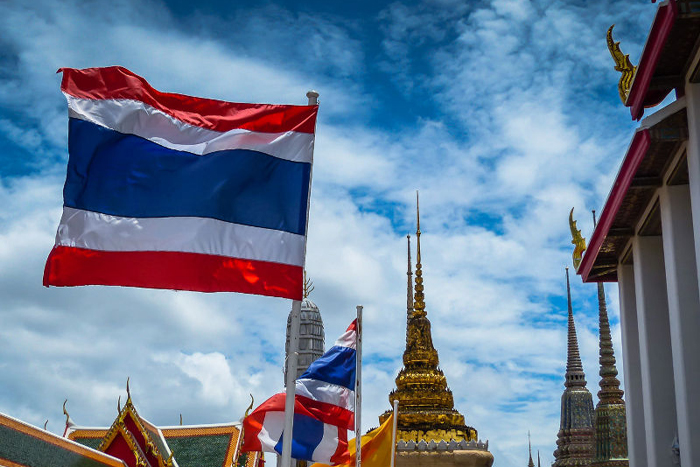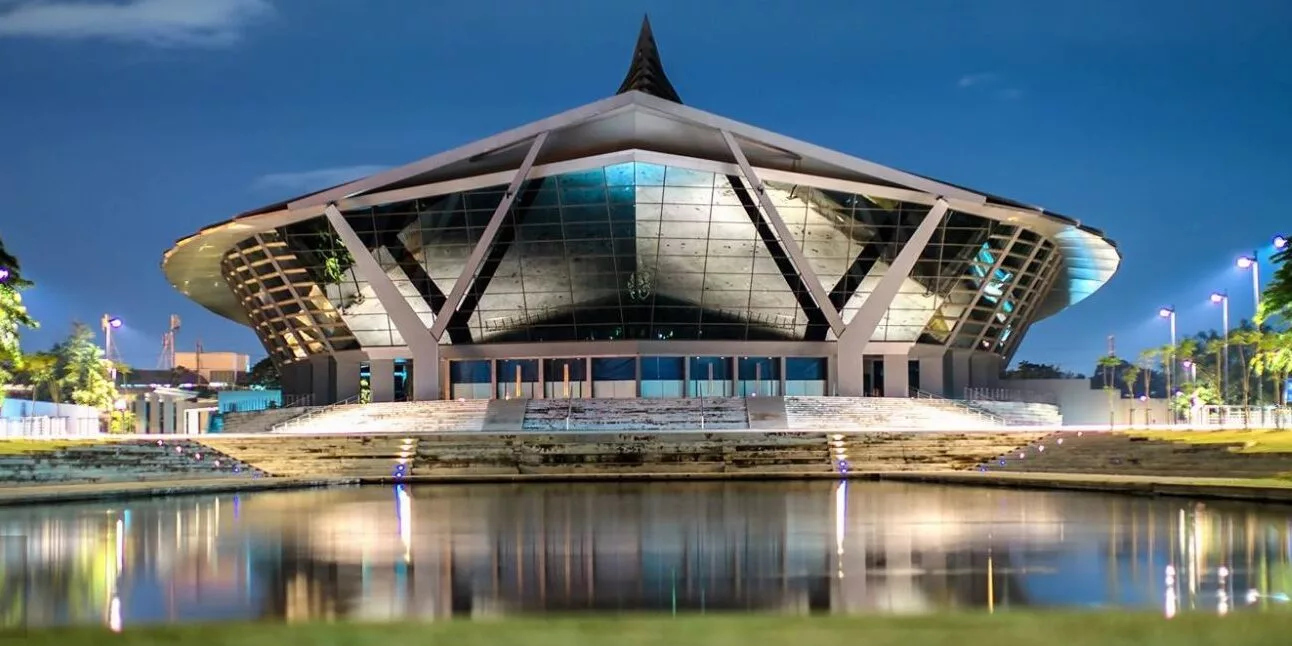
The Contribution of Thailand's Academic Institution to Translation Studies
In recent years, Thailand’s academic institutions have taken remarkable steps to elevate the field of translation studies, a discipline that blends language, culture, and communication into a bridge between nations. Once a relatively underexplored academic area in Southeast Asia, translation studies in Thailand have developed into a vital and multidimensional field, supported by universities that emphasize both theoretical knowledge and hands-on experience.
This transformation is not accidental. It’s the result of sustained academic commitment, strategic development of translation centers, and the integration of cultural understanding into professional training. Today, translation studies in Thailand are not only shaping the country’s academic landscape but also strengthening its role in international dialogue. Please kindly read on to discover more!
Chulalongkorn University: A Pioneer in Thai Translation Studies
Jumping to Thailand’s academic institutions and their contribution to translation studies, it’s impossible to overlook Chulalongkorn University, one of the country’s most prestigious and forward-thinking universities.
Founded over a century ago, Chulalongkorn University has consistently positioned itself as a national leader in academic innovation. In 1986, it established the Chalermprakiat Center of Translation and Interpretation under its Faculty of Arts. The center was created not only to provide translation and interpretation services, but to advance the academic study of translation in Thailand as well.
This dual mission makes the center unique: it acts as both a professional hub for translation practice and an academic laboratory for research and training. Students and professionals alike gain real-world experience translating texts across a wide range of fields, from literature and law to international relations and media.
One of Chulalongkorn’s most significant contributions to global translation scholarship is its co-sponsorship of the journal New Voices in Translation Studies, in collaboration with the International Association for Translation and Intercultural Studies (IATIS). The journal has gained international recognition and was recently ranked among the top 10% (Q1 Tier 1) of translation studies journals worldwide.
Moreover, this achievement highlights not just the quality of Thai scholarship, but also the growing influence of Thailand’s academic institutions in the international research community. Chulalongkorn’s model combining academic excellence, global networking, and practical translation services has become a benchmark for other universities in Thailand and across Asia.
Mahidol University: A Multilingual Bridge Between Cultures

Another leading Thailand academic institution that has made a major contribution to translation studies is Mahidol University, particularly through its Research Institute for Languages and Cultures of Asia (RILCA).
Within RILCA, the Center for Translation and Language Services (CTLS) serves as both a professional service unit and a center of academic research. The CTLS specializes in translating and interpreting across a wide spectrum of languages, including Thai, English, Lao, Burmese, Chinese, Japanese, Korean, Arabic, and several European languages.
What makes Mahidol’s approach distinctive is its focus on cross-cultural understanding and linguistic diversity. The university sees translation not merely as a technical act of converting words from one language to another, but as a cultural bridge that connects communities, preserves heritage, and fosters mutual respect.
Through its multilingual translation programs, Mahidol has become a regional leader in promoting intercultural communication. Its students and researchers are trained to think critically about language as a cultural tool that carries the identity, values, and worldviews of its speakers.
By positioning translation as both a professional skill and a cultural practice, Mahidol University underscores the transformative power of translation in shaping inclusive societies and advancing Thailand’s role in international academia.
Beyond Bangkok: Expanding Translation Studies Across Thai Universities
While Chulalongkorn and Mahidol are the cornerstones of translation studies in Thailand, many other universities are following in their footsteps. Institutions across the country are recognizing the economic and cultural importance of translation, particularly in a rapidly integrating ASEAN region.
For example, Burapha University has developed translation and interpretation training programs tailored to the needs of the Eastern Economic Corridor (EEC), Thailand’s flagship regional development project. These programs prepare students and professionals to handle translation tasks in industrial, business, and governmental contexts, aligning academic training with market realities.
Meanwhile, other universities, including Khon Kaen University, Chiang Mai University, and Thammasat University, are strengthening their language institutes and establishing translation service units. These units often operate as hybrid spaces—part academic, part professional—where students gain practical translation experience while providing real-world language services to communities and organizations.
In parallel, a growing number of Thai scholars are publishing research on translation pedagogy, translation competence, and Thai-Chinese translation strategies. These studies, often conducted in provincial universities, are enriching Thailand’s domestic scholarship and offering new insights into bilingual education and regional translation practices.
Key Contributions of Thai Academic Institutions
In the contributions of Thailand’s universities to translation studies, there are several major themes emerge that make the Thai model distinct and globally relevant, as follows:
Integrating Research and Practice
Thai universities bridge the gap between theory and application. Their translation centers, such as those at Chulalongkorn and Mahidol, serve as living laboratories where translation theory meets professional practice. This integration ensures that students not only learn linguistic skills but also understand real-world demands and ethical considerations in translation.
Promoting Multilingualism
Unlike many Western institutions that focus primarily on English-centric translation, Thai universities emphasize a multilingual and multicultural approach. Translation studies in Thailand encompass regional languages such as Lao, Burmese, Khmer, and Malay—reflecting Thailand’s geographical position as a linguistic crossroads in Southeast Asia.
Strengthening Cultural Diplomacy
Through translation, Thailand’s academic institutions help preserve and share Thai culture, literature, and thought with the world. Translation becomes a form of soft power, a way to promote Thailand’s cultural identity while engaging with global audiences.
Linking Translation to Regional Development
Translation is not viewed merely as an academic discipline; it is also recognized as an enabler of economic and social growth. In line, training programs are increasingly designed to meet the communication needs of Thailand’s industries, tourism, and trade sectors, particularly in multilingual contexts like the ASEAN Economic Community.
Achievements Worth Noting
Thailand’s translation studies community has achieved several milestones that have boosted its regional and international standing, as follows:
-
International Recognition: The New Voices in Translation Studies journal being ranked in the Q1 category demonstrates that Thai-led scholarship meets global academic standards.
-
Diverse Language Capacity: Universities like Mahidol provide translation in more than a dozen languages, reflecting the linguistic and cultural richness of Thai academia.
-
Applied Research: Thai scholars are producing studies on translation competence, professional ethics, and service quality benchmarking—topics that directly inform how translation is taught and practiced in Thailand.
-
Integration with Professional Practice: Many universities now operate translation service units, providing students with hands-on training while supporting real clients—a model that ensures academic work remains relevant to society.
Hence, these accomplishments show that translation studies in Thailand is not only thriving, but simultaneously evolving into a model for other ASEAN countries that wish to link language education with development goals.
Ongoing Challenges
Despite these advances, Thailand still faces challenges in fully realizing its potential as a global center for translation studies. What are they?
First, a large proportion of Thai translation research is published in the Thai language, which limits international accessibility and citation. Encouraging more publications in English could help amplify the voices of Thai scholars worldwide.
Second, out of more than 150 universities in Thailand, only a small percentage currently offer postgraduate programs in translation or interpreting. Expanding specialized graduate training would help nurture a larger pool of professional translators and researchers.
Third, translation technology is advancing rapidly. Machine translation, localization software, and computer-assisted translation tools are transforming the industry. Thai academic institutions must continue integrating these technologies into their curricula to keep pace with global standards.
Lastly, cross-border collaboration—both within ASEAN and beyond—remains a crucial step. Building partnerships with universities in other countries could open new opportunities for joint research, student exchange, and comparative studies in translation.
The Road Ahead: Thailand’s Global Voice in Translation
Looking forward, Thailand’s academic institutions are well-positioned to play a pivotal role in shaping the future of translation studies, not only in Southeast Asia, but on the global stage. The country’s distinctive approach, blending linguistic expertise, cultural insight, and social responsibility, gives it a competitive edge in an era defined by global communication.
With continued investment in research, internationalization, and technology, Thai universities can expand their influence and visibility in the global translation landscape. Furthermore, the next generation of Thai translators and scholars will likely be at the forefront of bridging digital innovation with human-centered translation practices.
Conclusion
The story of translation studies in Thailand is, at its core, a story of evolution. From the pioneering efforts of Chulalongkorn University to the multilingual vision of Mahidol University and the growing regional participation of institutions like Burapha University, Thailand has built a dynamic academic ecosystem that merges education, research, and real-world impact.
In addition, translation in Thailand is more than a profession; it is a cultural mission, a channel of diplomacy, and a tool for national development. Through the commitment of its academic institutions, Thailand continues to promote understanding across languages and cultures, shaping a future where translation serves not only communication, but connection in line.
As the field grows, one thing becomes clear: the Thailand academic institution is not just a participant, but a driving force in the evolution of global translation studies.
Ready to Work with Translators Trained by Thailand’s Top Universities?
From Chulalongkorn and Mahidol graduates to ASEAN multilingual experts, Digital-Trans Asia gives you direct access to Thailand’s finest academic talent — ensuring every project is handled with world-class skill, cultural depth, and real-world precision.
Whether you need legal, medical, literary, or business translation, we deliver excellence that only Thailand’s leading institutions can produce.
Contact Digital-Trans Asia Today → Partner with the Best Thai Translators in the Region